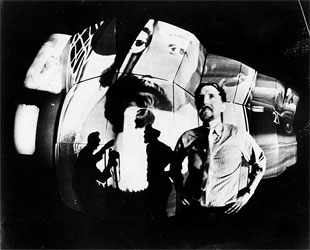
Stan VanDerBeek (1927-1984) shares with artists like Josef Albers, Aldous Huxley, John Cage, Robert Rauschenberg, and Buckminster Fuller the legacy of having developed their practice at Black Mountain College, the creative mecca where these and other thinkers pushed the edges of visual art, music, literature, technology, and consciousness. His experimental films of the 1950s blurred dada collage and science fiction, and he was an early adopter of both analog processes and computer animation, establishing for him a godfather-like position in the origin-narratives surrounding new media. His often rough aesthetic anticipated glitch-fetishism by several decades and drove the surrealist aesthetic into new territory; yet this is not to say that his works didn't go down smoothly. (The internet is full of video evidence of his colorfully dreamy proliferations.) The artist is currently the subject of an exhibition at New York's Guild & Greyshkul gallery, where one can see VanDerBeek's contribution to the proto-history of digital copy-and-paste stylistics in the form of real copy-and-paste collages and his own reworkings of his early films. Much of the work in the show, including a "faux mural" he transmitted electronically to international venues, in 1970, was made in his days at MIT, where his immersion among scientists and engineers had a clear impact on his art. VanDerBeek had a futurist and almost cosmological approach to his work and was one of those artists known for spouting beautiful witticisms about finding universal modes of expression that transcended media and the confinement of traditional forms. At the end of the day, he also reminded us that "Art is the artifact of reality (not taken for granted)." - Marisa Olson